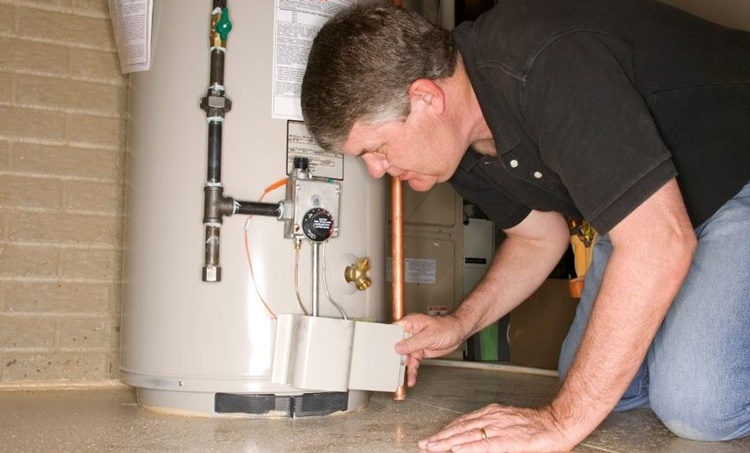Simple Ways to Maintain Your Home's Hot Water System ProperlyProfessional Advice on Maintaining Your Home's Hot Water System
Simple Ways to Maintain Your Home's Hot Water System ProperlyProfessional Advice on Maintaining Your Home's Hot Water System
Blog Article
Were you on the lookout for information about Water Heater Maintenance Tips You Can't Afford to Forget?

Warm water is important for day-to-day convenience, whether it's for a refreshing shower or washing meals. To ensure your warm water system runs efficiently and lasts much longer, regular upkeep is essential. This article supplies practical suggestions and understandings on exactly how to keep your home's hot water system to prevent disruptions and expensive repairs.
Intro
Maintaining your home's warm water system could seem daunting, yet with a few simple actions, you can ensure it runs smoothly for several years to come. This overview covers whatever from understanding your warm water system to DIY upkeep tips and recognizing when to contact professional assistance.
Importance of Preserving Your Warm Water System
Routine maintenance not just extends the life expectancy of your hot water system however also guarantees it operates successfully. Neglecting maintenance can bring about reduced performance, higher power bills, and also premature failing of the system.
Signs Your Hot Water System Demands Maintenance
Recognizing when your hot water system needs interest can protect against significant issues. Watch out for indicators such as inconsistent water temperature, odd sounds from the heater, or rusty water.
Flushing the Hot Water Heater
Purging your water heater removes debris buildup, enhancing efficiency and prolonging its life.
Checking and Changing Anode Rods
Anode poles protect against corrosion inside the tank. Examining and changing them when worn is vital.
Complicated Concerns Calling For Specialist Help
Examples include major leaks, electrical issues, or if your hot water heater is regularly underperforming.
Regular Specialist Maintenance Advantages
Expert upkeep can consist of comprehensive assessments, tune-ups, and making certain conformity with safety requirements.
Checking and Readjusting Temperature Level Settings
Adjusting the temperature setups makes certain optimal performance and safety.
DIY Tips for Upkeep
You can execute numerous upkeep jobs on your own to maintain your hot water system in top condition.
Checking for Leaks
Regularly inspect pipelines and links for leakages, as these can cause water damage and higher bills.
Understanding Your Warm Water System
Prior to diving right into maintenance tasks, it's useful to understand the basic parts of your warm water system. Normally, this includes the hot water heater itself, pipelines, anode rods, and temperature controls.
Month-to-month Upkeep Tasks
Routine regular monthly checks can help capture small problems before they escalate.
Examining Stress Relief Valves
Testing the stress safety valve ensures it functions appropriately and stops extreme pressure build-up.
Protecting Pipes
Shielding warm water pipes reduces warmth loss and can save energy.
When to Call a Specialist
While DIY maintenance is valuable, some problems require specialist know-how.
Conclusion
Normal maintenance of your home's warm water system is necessary for effectiveness, long life, and expense financial savings. By complying with these suggestions and knowing when to look for expert help, you can make certain a trustworthy supply of warm water without unexpected disruptions.
How to Maintain an Instant Hot Water Heater
Before tinkering with your hot water heater, make sure that it’s not powered on. You also have to turn off the main circuit breaker and shut off the main gas line to prevent accidents. Also turn off the water valves connected to your unit to prevent water from flowing into and out of the appliance. 2. When you’re done, you have to detach the purge valves’ caps. These look like the letter “T” and are situated on either side of the water valves. Doing so will release any pressure that has accumulated inside the valves while at the same time avoid hot water from shooting out and burning your skin. 3. When the purge valves’ caps are removed, you have to connect your hosing lines to the valves. Your unit should have come with three hoses but if it didn’t, you can purchase these things from any hardware or home repair shops. You can also get them from retail stores that sell water heating systems. Read the user’s manual and follow it to complete this task properly. When the hosing lines are connected, open the purge port’s valves. 4. You should never use harsh chemical cleaners or solutions when cleaning your unit. Make use of white vinegar instead. It should be undiluted and you’ll probably use about 2 gallons. 5. Now flush your water heater. This task should probably take about 40 minutes. We can’t give you specific directions for this because the procedure is carried out depending on the type, model and brand of your heater. With that being said, refer to the user’s manual. 6. When you’re done draining the unit, you have to turn off the purge port valves again. Remove the hosing lines that you earlier installed on each of the water valves. Put the valve caps (purge port) back in their respective places and be very careful so as not to damage the rubber discs that are found inside these caps. 7. Now that everything’s back in place, check your user’s manual again to find out how to reactivate your water heating system. 8. Once it is working, turn one of your hot water faucets on just to let air pass through the heater’s water supply pipes. Leave the tap on until water flows smoothly out of it. https://www.orrplumbing.com/blog/2014/september/how-to-maintain-an-instant-hot-water-heater/

As a keen reader about What Kind of Maintenance Do Water Heaters Need?, I figured sharing that chunk was a good thing. Sharing is caring. Helping others is fun. Many thanks for being here. Don't hesitate to check up our site back soon.
Go Deal Report this page